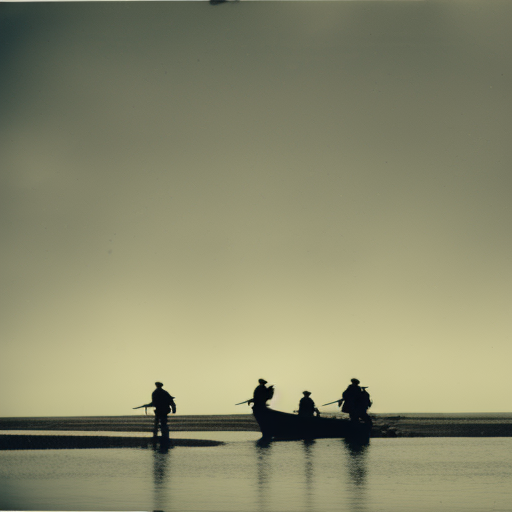Battle of Öland: A Decisive Naval Conflict in the Baltic Sea
The Battle of Öland was a significant naval engagement that took place on June 1, 1676, during the Scanian War. It was fought between the Swedish Navy, led by Admiral Lorentz Creutz, and the combined forces of the Danish and Dutch navies, commanded by Admiral Cornelis Tromp. The battle occurred near the island of Öland in the Baltic Sea and resulted in a decisive victory for the Swedish Navy.
Background:
The Scanian War, which lasted from 1675 to 1679, was a conflict between Sweden and an alliance consisting of Denmark-Norway, the Dutch Republic, and Brandenburg-Prussia. The war was primarily fought over control of the southern Scandinavian territories, including Skåne, Halland, and Blekinge. Both sides sought to secure their dominance in the region and expand their territories.
Preparations and Forces:
In the spring of 1676, the Swedish Navy, under the command of Admiral Creutz, prepared for a major confrontation with the combined Danish and Dutch fleets. The Swedish fleet consisted of approximately 45 warships, including the flagship Kronan, one of the largest warships of its time. The Danish-Dutch fleet, led by Admiral Tromp, had around 70 warships at their disposal.
The Battle:
The battle began on the morning of June 1, 1676, when the Swedish and Danish-Dutch fleets sighted each other near Öland. Admiral Creutz, aware of the numerical superiority of the enemy, devised a tactical plan to compensate for the difference in numbers. He ordered his fleet to form a defensive line, with the Kronan positioned at the center, flanked by smaller ships.
As the battle commenced, the Danish-Dutch fleet launched a series of attacks, attempting to break through the Swedish defensive line. However, the Swedish Navy, with superior maneuverability and well-trained crews, effectively repelled the enemy assaults. The Kronan, in particular, played a crucial role in the battle, inflicting heavy damage on several enemy vessels.
Despite their initial setbacks, the Danish-Dutch fleet continued their relentless attacks, hoping to overwhelm the Swedish defenses. However, the Swedish Navy’s disciplined and coordinated response, combined with the tactical advantage of their defensive formation, proved to be decisive. The battle raged on for several hours, with intense cannon fire and close-quarter combat.
Eventually, the Danish-Dutch fleet began to suffer significant losses, both in terms of ships and personnel. Admiral Tromp, realizing the futility of further engagement, ordered a retreat. The Swedish Navy pursued the retreating enemy, inflicting further damage and capturing several Danish and Dutch vessels. The Battle of Öland ended in a resounding victory for the Swedish Navy.
Aftermath:
The Battle of Öland was a turning point in the Scanian War. The Swedish Navy’s victory not only boosted the morale of the Swedish forces but also secured their control over the Baltic Sea. The battle demonstrated the effectiveness of the Swedish Navy’s tactics and the skill of its sailors. It also highlighted the limitations of the Danish-Dutch alliance, which struggled to coordinate their efforts effectively.
The outcome of the battle had significant political and military consequences. Sweden maintained its dominance in the Baltic region, while the Danish-Dutch alliance was forced to reassess its strategy. The Battle of Öland also showcased the importance of naval power in the context of European conflicts during the 17th century.
In conclusion, the Battle of Öland was a pivotal naval engagement during the Scanian War. The Swedish Navy’s victory over the combined Danish and Dutch fleets demonstrated their superior tactics and skill. The battle had far-reaching consequences, securing Swedish control over the Baltic Sea and highlighting the significance of naval power in European conflicts of the time.












